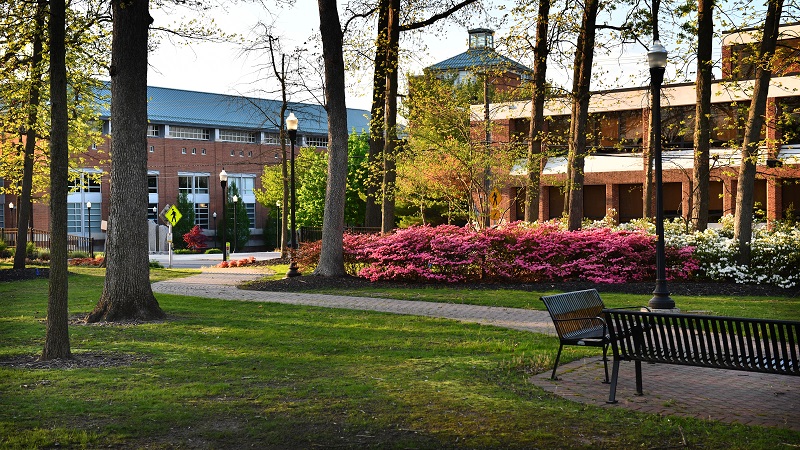Returning to Rowan: What the University community can expect
Returning to Rowan: What the University community can expect

The announcement that Rowan University will return as an on-campus living and learning environment for the fall semester was welcome news for the University community.
Yet, students, faculty, staff, and parents are wondering what a return to Rowan truly will look like—and be like—as the academic year begins on Sept. 1.
As students and faculty return to campus, “we will be working to keep everyone in the University community safe,” says Wellness Center Director Scott Woodside, who is overseeing the University’s commitment to health and wellness. “We are all in this together.”
While the COVID-19 pandemic calls for continued flexibility with regard to safety protocols and decision making, here’s a breakdown of how the return to campus is expected to impact academics, student life, and health and wellness at Rowan.
Academics
“Thanks to significant upgrades in technology made available to our faculty, almost every course at Rowan will give students the option to either attend in person or to attend remotely while participating fully in class,” says Rowan Provost Tony Lowman, noting that the University is looking to provide options to students who need or are seeking remote learning due to the pandemic. HyFlex (Hybrid Flexible) formats for all traditional classes will include expanded online learning resources and capabilities, he adds.
“Faculty members have worked diligently at being prepared to accommodate all students,” Lowman says. “With our upgraded technology, if things change, faculty members also are fully prepared to return to remote teaching if they need to.”
Social distancing will be required in all classrooms and University buildings. Students likely will see that a number of desks in each classroom will be designated as unavailable. Anyone entering a building will be required to wear a face mask.
“Wearing a face mask shows respect for everyone’s safety,” says Lowman. “Doing so helps us work together to help limit the spread of the virus on our campuses.”
In academic buildings with multiple access points, some doors will be entrance or exit only. Some buildings also will have one-way walking routes as a way to cut down on the spread of the coronavirus. Elevators will carry one person at a time.
Some courses requiring experiential learning may be reconfigured or have staggered attendance so that social distancing can be achieved.
The student experience in residence halls and in dining facilities will look a little different due to the need for social distancing. But we are working creatively to give students vibrant peer-to-peer interactions through activities, programs, leadership opportunities and participation in clubs and organizations,” Koett says.
“There’s nothing like being a Prof and we can’t wait to have our students—and the energy they bring with them—back on campus.”
In-person programming, such as Rowan After Hours, will require attendance limits and, where possible, programs will be available in hybrid or fully remote form. Staff members will develop and enforce attendance limits for in-person events using current guidelines, policies, procedures and protocols. Students will RSVP for events via ProfLink.
A sophisticated system will be in place for residential students and housing staff. Residence hall rooms will have a two-person, per-room limit. Extra cleaning and sanitizing will happen in all residence halls throughout each day. Students, however, will need to clean their own personal spaces.
The University’s dining halls are undergoing site modifications in an effort to limit virus transmission and ensure cleanliness.
Buffet and drink options will not be available for self-service. Dining areas will be open with socially distanced seating where small groups may sit. Upgraded cleaning and sanitizing protocols will be in place and Gourmet Dining will continue to use the Grub hub app for ordering and takeout.
Health and wellness
Working to reduce the spread of COVID-19 on campus requires diligence and cooperation, Woodside notes.
“Once on campus, all members of the Rowan community will be required to submit their temperature daily and attest to being symptom-free before being able to access the Rowan network,” says Woodside.
Residential students who exhibit symptoms of COVID-19 and who are unable to return home will be moved to the Triad residence hall for a period of isolation.
The University will have on-campus coronavirus testing in place, including a testing site for students five days each week outside Hollybush Mansion. It has also purchased a machine that can process tests in just 45 minutes, allowing for the quick tracking of who the student may have come in contact with.
Additionally, 25 Rowan administrators and staff are undergoing training to be contact tracing investigators, a move designed to help mitigate the spread of COVID-19.
“Contact tracing takes place when there’s a confirmed case,” says Woodside, who is working with the Gloucester County Health Department and the New Jersey Department of Health to lead the training and certification of Rowan’s contact tracers, all of whom have volunteered to serve as contact investigators.
Used for decades in public health as a method for communicable disease control, contact tracing involves identifying anyone who has come in contact with an infected person. Through contact tracing of affected individuals, testing and treatment, the work can help reduce the number of citizens affected by the disease.
Contact tracing has been used in the past for illnesses such as tuberculosis, measles, sexually transmitted diseases and smallpox.
“Contact tracing will give us an overview on public health specific to COVID-19,” Woodside notes.